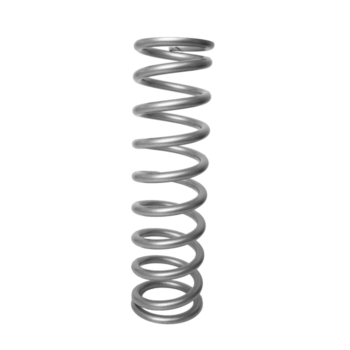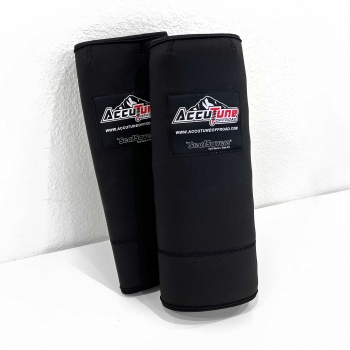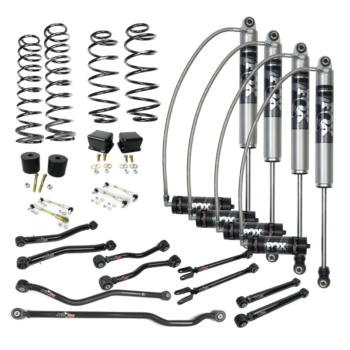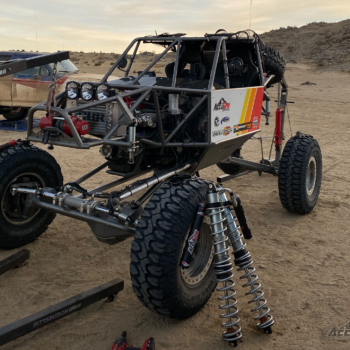There are two ways to get an off-road vehicle to handle well: sway bars or careful shock and spring selection. This article is for those who want to optimize their handling without using sway bars.
Off-Road Handling is Mostly About Spring Rate
Without sway bars, the springs and valving must work together to prevent chassis roll. While rebound and compression damping do impact chassis roll, spring rate is the primary driver of performance. To get a better perspective it helps to imagine the chassis of a vehicle rolling a set distance at a set rate of speed. Here is what happens during the corner:
- Spring compresses on compression side
- Spring extends on droop side
- Rebound damping resists extension on droop side
- Compression damping resists compression on compression side
Rebound damping is a function of spring rate, as spring rate increases so does the rebound damping. So in the example above, three of the four things which impact roll resistance are related to spring rate. Increasing spring rate is the easiest way to improve handling and results in the least performance degradation because rebound damping can easily be adjusted to match.
Design Your Springs to Use The Coilover Dual Rate Nuts
Designing your springs to use the coilover dual rate nuts is the first and most important step in improving handling performance. As the vehicle rolls, the dual rate nuts will engage the lower spring only and increase the spring rate on the compression side of the vehicle. Some care must be given to the lower spring selection to ensure it is capable of compressing enough and doesn’t go solid before the suspension bottoms out. We recommend starting with 1″ between the spring slider and coilover dual rate nuts at ride height, but tuning is required because every vehicle and spring combination is different. Be aware that putting the coilover dual rate nuts too close to the slider at ride height, or having too stiff of a lower spring can increase harshness.
Reduce Spring Preload
Reducing spring preload increases the spring rate and improves handling. Preload is the measure of how many inches of spring tension coilovers have at full extension. Having positive preload is necessary to make the axle droop properly over bumps and to provide traction when articulated. In our article about choosing springs, we established that target preload is between 1/2″ and 6″. For vehicles concerned with handling it is recommended to shoot for lower amounts of preload, in the example below, going from 2″ of preload to 1/2″ of preload resulted in a 19% increase in spring rate. Be sure to measure preload with the coilovers and limit straps installed or you may end up with excess preload.
Choose Coilovers to Eliminate Excessive Droop Travel
Many vehicles run excessive down travel that hurts their handling performance, careful thought needs to be given to how much down travel is really necessary. Spring rates decrease with droop travel because the springs need to be designed to have preload at full extension. In the chart below you can see how reducing down travel 2″ resulted in a 28% increase in spring rate. The amount of droop travel required for a good ride varies by vehicle, terrain and driver but excessive droop comes at the expense of handling. Here are droop numbers for common applications:
- Rock racer with 14″ travel = 5-6″ of droop
- Sand rail with 24″ travel = 6″ droop
- OEM Dodge Ram 2500 truck with 10″ travel = 4-5″ droop
The effects of preload and droop travel on spring rate:














Leave a Reply
Want to join the discussion?Feel free to contribute!